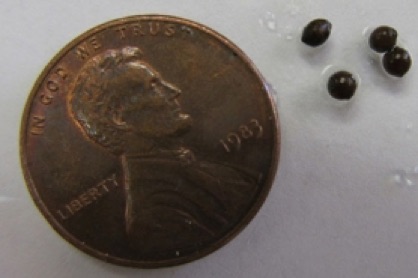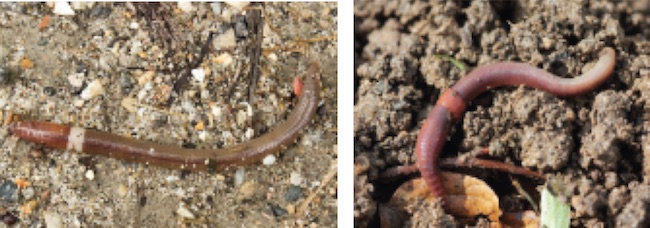Invasive jumping worm detected in Orleans County
Press Release, Cornell Cooperative Extension in Orleans County
KNOWLESVILLE – The first confirmed case of the Asian Jumping Worm was submitted to the Diagnostic Lab at Orleans County Cornell Cooperative Extension last week. The specimen came from a home in the village of Medina. The homeowner could not be sure how it arrived to the property.
The “Asian Jumping Worm” is the common name for three different species of earthworms in the Amynthas and Metaphire genera. As the common name suggests, these worms originated in Asia.
There are actually no native earthworms here in Orleans County. The ones we commonly see on rainy days are actually species from Europe, brought over during colonization. These jumping worms pose a greater threat than the European species, however, because they consume organic matter in the soil at far greater rates than the naturalized European species.
This rapid consumption causes big problems for both plant and animal life that relies on healthy soil. Jumping worms leave behind nutrient stripped castings that make it difficult for plants to thrive. These castings are pretty distinctive in appearance, often being compared to dried coffee grounds.

Photo by UW Arboretum: Tiny cocoons are difficult to see.
The worms also disturb and degrade the soil to such extent that, in heavy infestation areas, the forest floor has actually been dropping due to the diminishing soil organic matter. The soil disturbance can also encourage an inhospitable environment for vital soil fauna and those that depend on them for survival like salamanders, birds and other animals. These earthworms can also reproduce without mating, so they can multiply rapidly creating high densities in the soil.
Jumping worms can be distinguished from European earthworms by their behavior and their “clitellum” (the distinct band near the head of the worm). In the jumping worm, the clitellum is often closer to the head, and whitish in color and smooth (the European species tend to have raised clitellum that are pinkish-brown in color). The jumping worms will also often have “crazy” behavior, wriggling and thrashing erratically when exposed.
The spread of these invasive worms can be directly linked to human activity. Worms and their poppy-sized egg casings can be transported through soil, mulch, tools and equipment, shared or purchased plants, or even treads on shoes. Essentially any soil mass larger than a poppy seed has the potential to spread either worms or the cocoon egg masses. Adult worms will die off with the winter cold, however the cocoons will survive the winter, hatch in the spring and start the cycle over again.
Because these worms have now been confirmed to be present in Orleans County, it is important for homeowners and businesses to do their part to reduce the spread. Some key ways to prevent these invasive worms from becoming more prevalent in our community are:
- Do not buy or use jumping worms for bait, vermi-composting, or gardening. Purchased earthworms may also be mislabeled, so learn to identify jumping worms by their look and behavior.
- Scout the Soil: Check new mulch, compost, and soil for jumping worms and inquire with providers if measures have been taken to reduce the spread of jumping worms. If you can’t confirm the source is jumping worm-free, only purchase or trade mulch, compost, and soil that has been heated to appropriate temperatures and duration following protocols for reducing pathogens (104 – 130˚F for three days is sufficient).
- Scan the Plants: Check the soil and roots of potted plants and trees for jumping worms or castings before planting them in your yard. When the option exists, choose bare-root plants over potted plants, ensuring no soil remains affixed. If you find jumping worms in materials you bring in, dispose of all contaminated soil and castings in the trash and kill worms by freezing or leaving in a bag out in the sun, then discard. Alternatively, worms may be killed using vinegar or rubbing alcohol.
- Clean compost, soil and debris from vehicles, personal gear (clothing and boot treads), equipment, and gardening tools before moving to and from sites.
- If jumping worms are present on your property, do not share or move plants. If you do move or share plants, wash roots and share them either bare-root or re-pot in sterile potting soil.
For more detailed information and images, please see the WNY PRISM Homeowners Guide to Asian Jumping Worms.
If you think you might have jumping worms on your property, please report them to https://www.nyimapinvasives.org/.
You can also call Orleans County Cornell Cooperative Extension at 585-798-4265 ext. 125 or email klo54@cornell.edu with any questions.
Resources: CCE Asian Jumping Worm Factsheet, WNY PRISM Homeowner’s Guide to Asian Jumping Worms.






































































